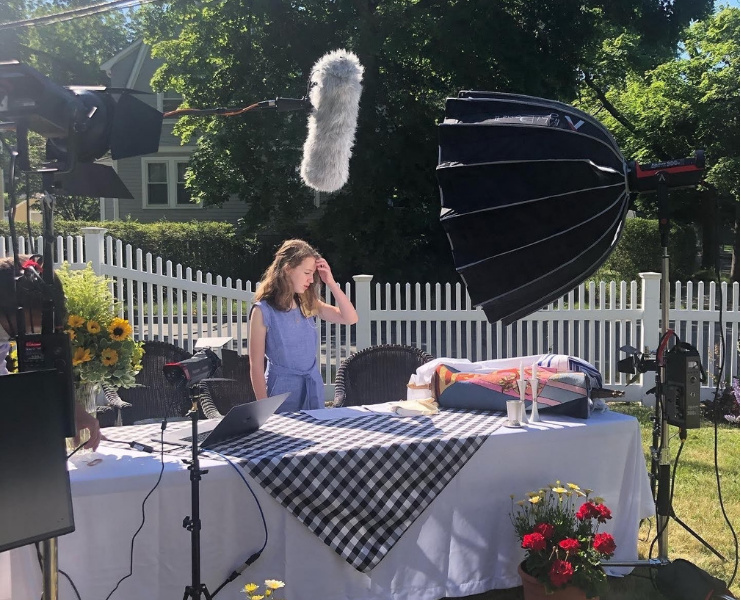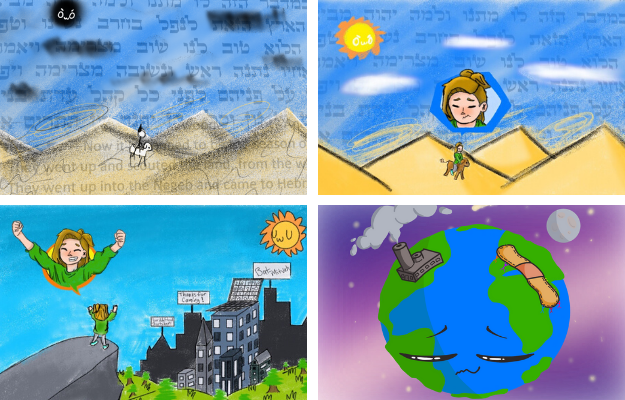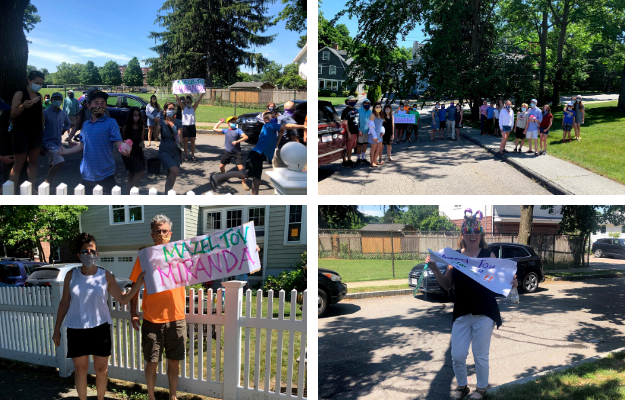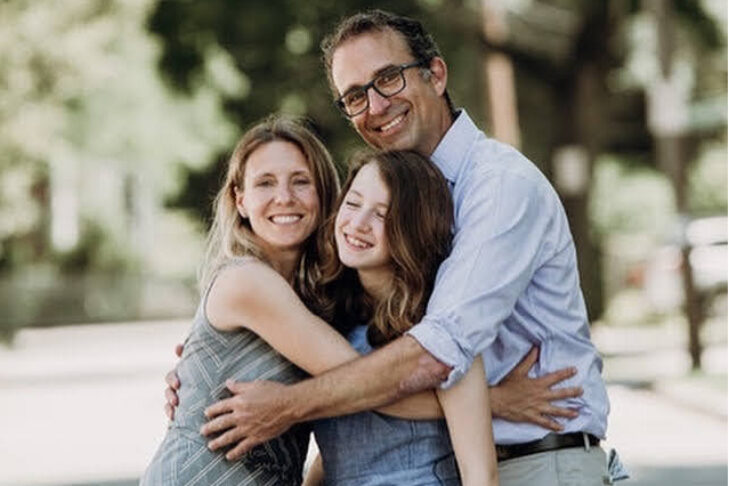Our daughter Miranda became a bat mitzvah in June 2020. It wasn’t at all what we had expected, but it was wonderful.
We had imagined an event much like our older daughter Amelia’s bat mitzvah two years earlier. The service would be in the newly renovated Temple Shalom sanctuary, surrounded by our clergy, family and friends, both local and traveling across the country, followed by a party in the social hall, with the festivities perhaps spilling outside into the summer weather for food trucks and games. The weekend itself would be packed with house guests and shared meals, cousin sleepovers and grandparent visits. The event overall would reflect the joy of the occasion and celebrate Miranda’s unique entrance into the community of Jewish adults.
Of course, a lot of those specific plans were no longer possible by June. Our realization was both immediate with the sudden, rapidly expanding pandemic, and gradual as we slowly came to accept the reality of the global and local situation. We felt sadness and guilt, as the world that Miranda hadn’t yet had the opportunity to repair let her down.
Eventually we decided to move forward, keeping Miranda’s original bat mitzvah date, which she had successfully prepared for, figuring that there was little gain in postponing it. Navigating this new normal, we held onto as much of the familiar as possible while accepting what was out of our control. We focused on our original goal to let the event express Miranda’s personality.
That Saturday felt like the day of any typical b’nei mitzvah, with everyone dressing and prepping and the photographer taking pictures. It was a beautiful morning with a bright sky and warm sun. Miranda had always wanted to have the party outside, and with the inability to gather at synagogue, we had the opportunity to hold the service outside as well. Temple Shalom had arranged for a videographer to provide professional camera, sound and lighting, and he was willing to attempt his first outdoor event. The light streaming through the trees onto the yard was just as the production team had hoped it would be. We carefully set up chairs in the yard six feet apart for Miranda’s Bubbe, Zayde, aunt and four friends. We put flowers around a table that would hold the Torah currently sitting inside on our dining room table.

At 9:15 that morning, the four of us sat at a makeshift bima with challah, wine, the Torah and a laptop. Our attendees had smartphones and earbuds to follow along. The videographer said we were “live” and Miranda’s bat mitzvah started with Cantor Leah Shafritz’s voice on the laptop. Rabbi Laura Abrasley led from the Temple Shalom sanctuary, as we were just a block away, sitting in the hot sun, watching it all in front of us both live in our backyard and on screen.

Miranda is an artist who expresses herself through her drawings, and the technology-enabled service complimented her combination d’var Torah/artist talk. In fact, it was so natural that we decided at the last minute to include some of her drawings in our parents’ speech as well. Our Temple Shalom friends surprised our little congregation with a masked and distanced parade, carrying signs, singing, mazel tov’ing and throwing candy and water balloons. Later that evening, a small handful of Miranda’s friends sprawled in our yard on blankets six feet apart, gathered for pizza and video games projected on a 10-foot screen.
We can’t say we aren’t left with regrets. We wish our clergy could have physically stood with us, that our extended family could have gathered together and that more of our community could have attended in person. However, we wouldn’t change the memorable, only-in-2020 details that made Miranda’s bat mitzvah distinctive: The outdoor service. The artistic focus. The surprise technical glitches. The combination of birds and leaf blowers in the background of her Torah readings. The screams of her friends’ laughter in our yard that evening. The extra efforts our community made to make the day special.

Miranda’s d’var Torah was about the difficulty of facing a challenge and finding the strength to fight through it. She delivered her message through her art, and all art has constraints: While a speech doesn’t have pictures, a drawing doesn’t use words. A sonnet has 14 lines and a haiku is short. A bat mitzvah in the time of the coronavirus doesn’t have the Temple Shalom sanctuary, or blocks of hotel rooms, or function halls. But the art comes from the constraints of the form.
Miranda created something beautiful within her constraints that was truly and uniquely her own, both in her d’var Torah and in her bat mitzvah, nurtured by our temple, our clergy and our community. After this experience of Miranda’s bat mitzvah, we are excited to see the beauty we will all continue to create together in the coming months and years, both during the pandemic and after it’s over.
This post has been contributed by a third party. The opinions, facts and any media content are presented solely by the author, and JewishBoston assumes no responsibility for them. Want to add your voice to the conversation? Publish your own post here. MORE


